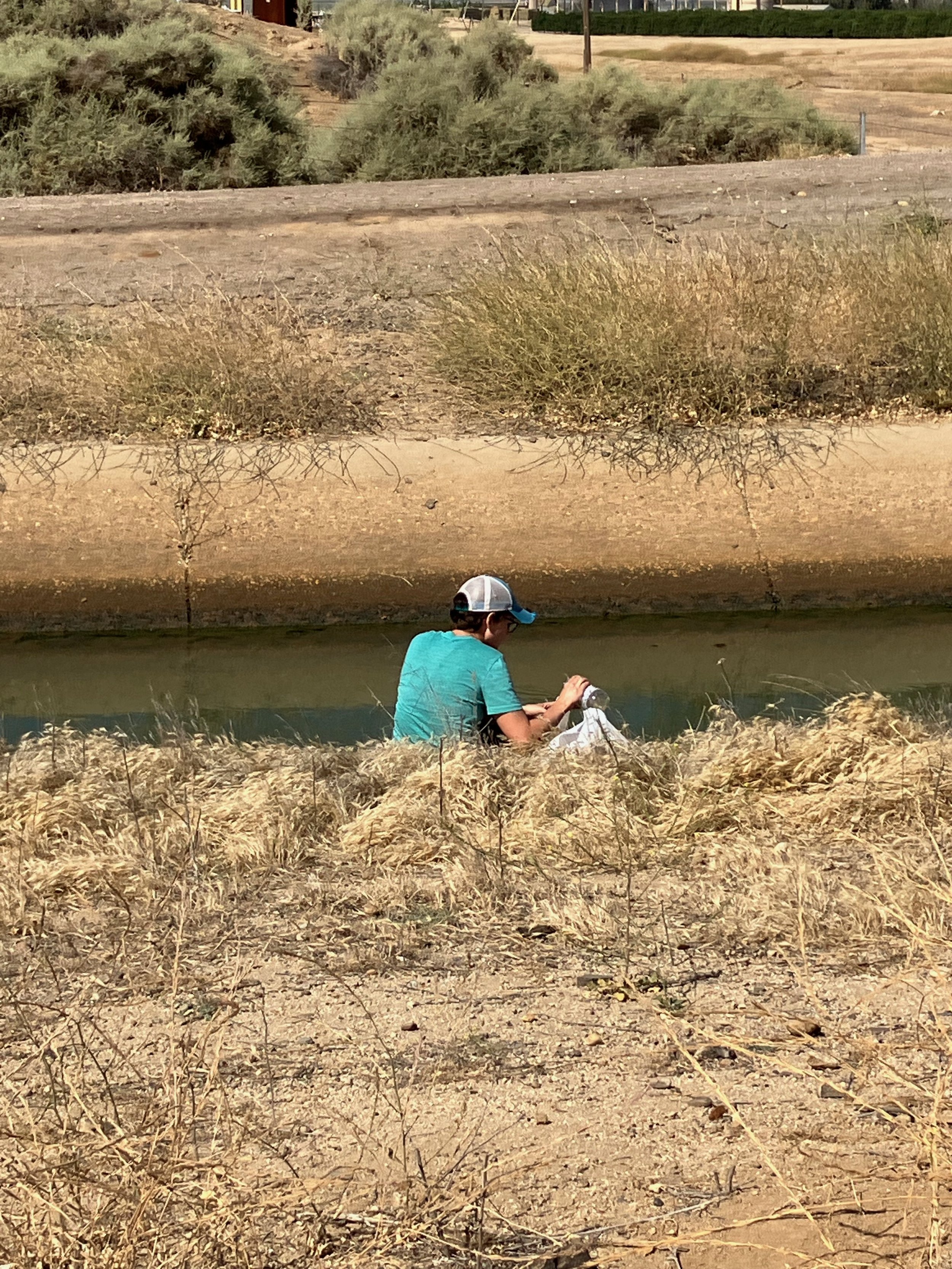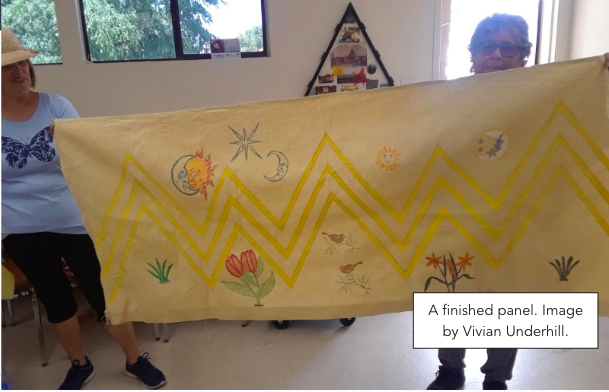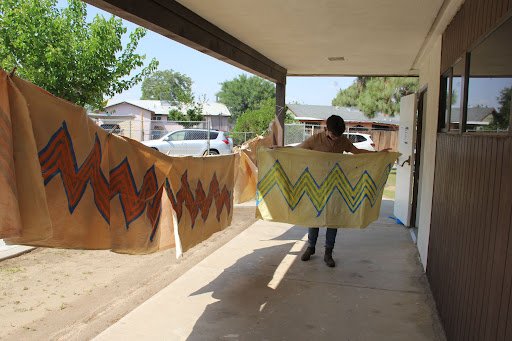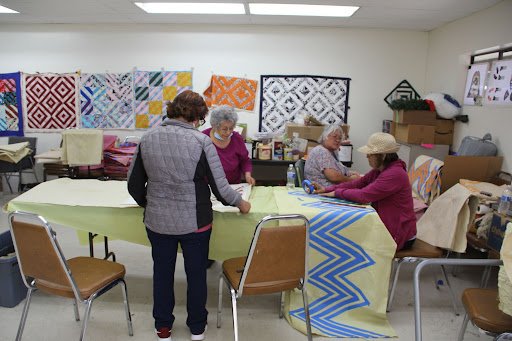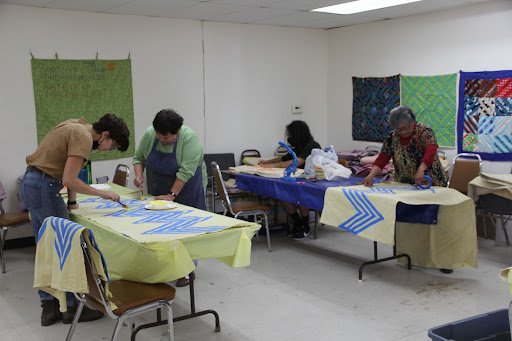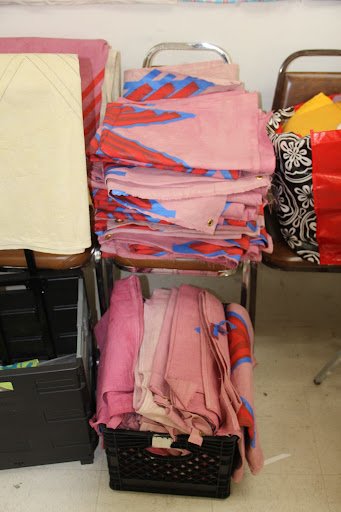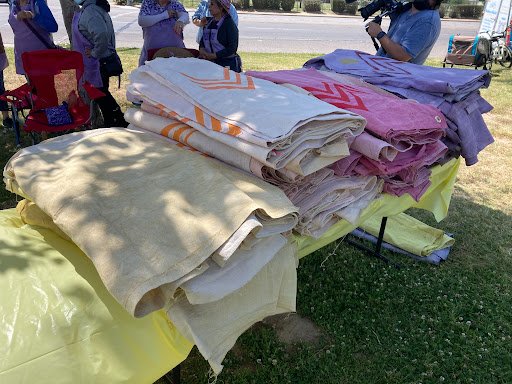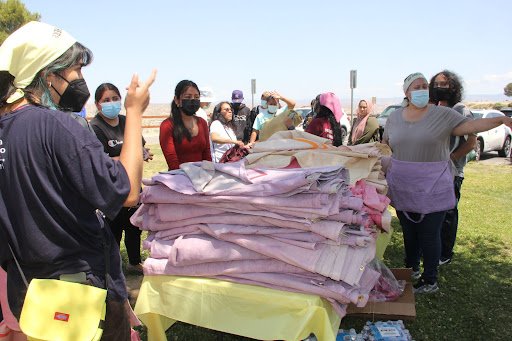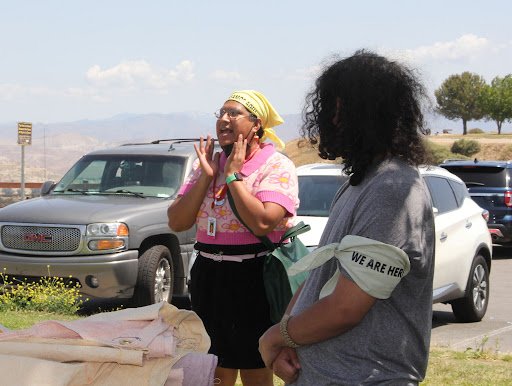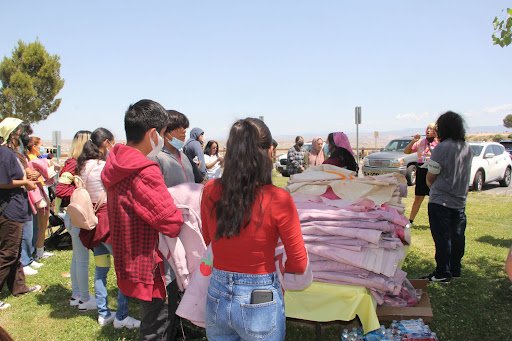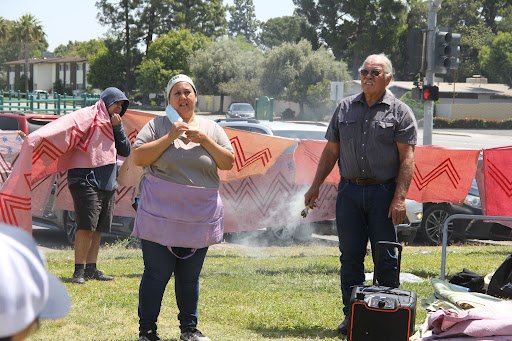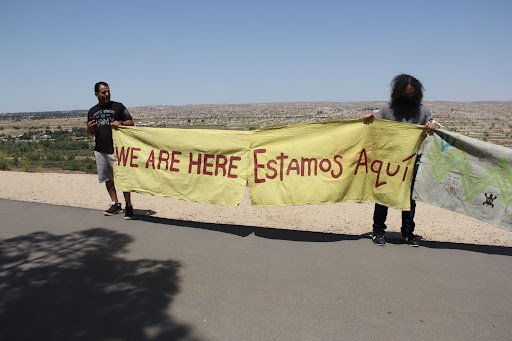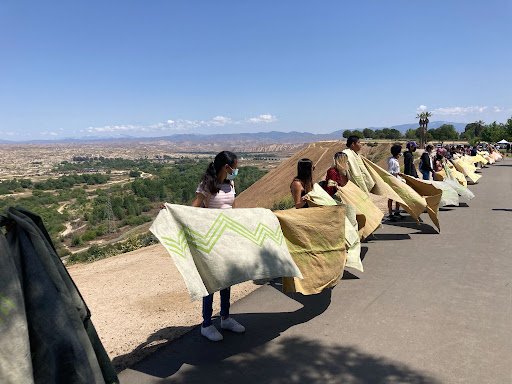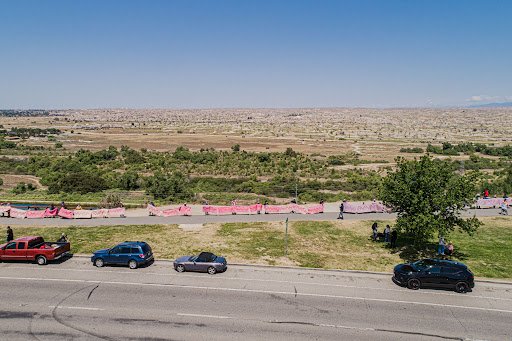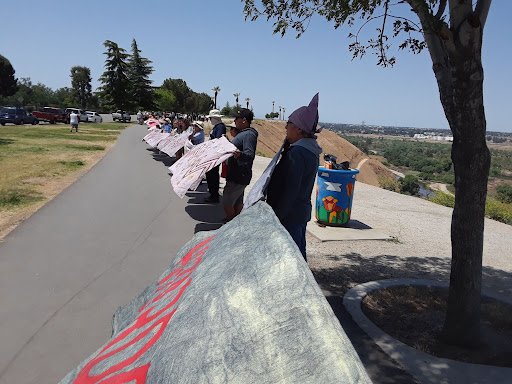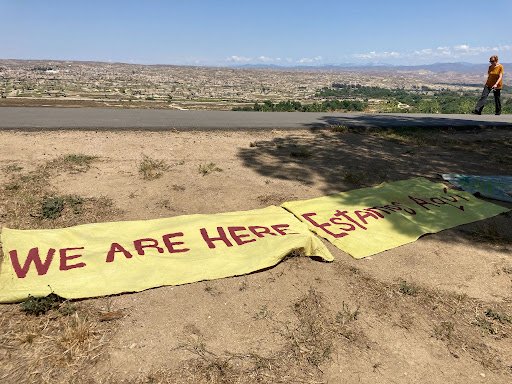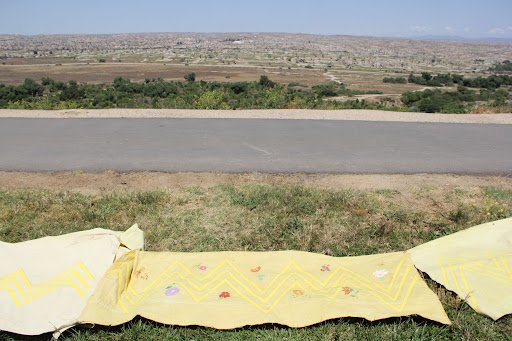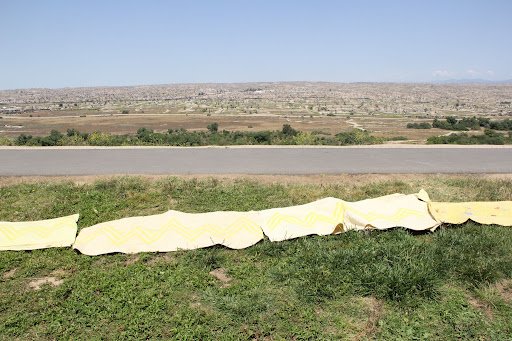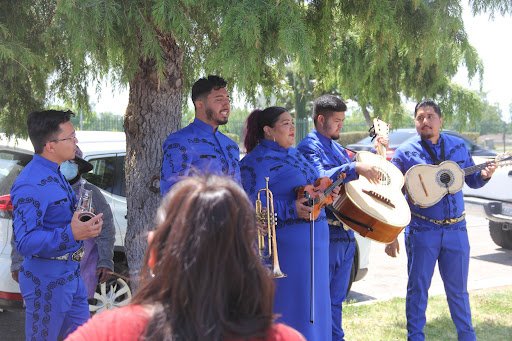
Natural Dyes:
The Color Story of a Place
“If natural dyes show the color story of a place, water contamination is now a part of that color story.”
— Michelle Glass, public artist and collaborator
This work begins in Arvin, California, and other small towns in California’s southern San Joaquin Valley, done in collaboration with Adelante Art Collective and Liberated Youth For Empowerment (LYFE), a program of the Dolores Huerta Foundation.
Two years ago, we participated in a two-year project combining environmental justice wisdom with public arts, funded by Mural Arts Philadelphia. We focused on air quality because research was actively coming out about the links between poor air quality and increased death and hospitalization from Covid - especially in light of communities of color and farmworkers communities being disproportionately affected.
Ultimately, participants created a 2,500-foot long banner representing the recommended setback distance from an oil well.
In order to produce the banner, Adelante and others - including youth from the Dolores Huerta Project, the Boys and Girls Club, and public workshops - used natural dyes to color hundreds of panels in the spectrum of the Air Quality Index, green to deep red.
And then people painted on them things that they love about their homes, about the valley. This is a place that is so often disparaged - people often call it the ‘armpit of California’ - but the Central Valley’s toxicity has been produced in relation and as part of the wealth and environmental privilege of coastal towns nearby. A throughline of Adelante’s work is to celebrate the joy and the beauty here, as well.
We walked with this banner in a procession in front of the Kern River as a way of showing physically how far the setback distance should be.
But even before this project, the artists of Adelante had noticed differences in their natural dye colors with different water sources.
The only difference in each dye batch was the water we used: if natural dyes show the color story of a place, groundwater contamination is now part of that color story.

